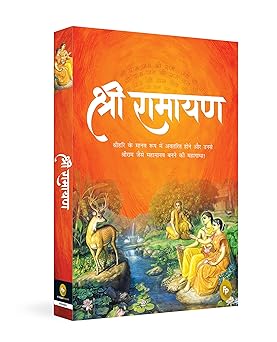परिचय: होली, जिसे रंगों का त्योहार भी कहा जाता है, भारत में सबसे लोकप्रिय और व्यापक रूप से मनाए जाने वाले त्योहारों में से एक है। यह आमतौर पर मार्च के महीने में आता है, जो वसंत के आगमन का प्रतीक है। होली एक ऐसा त्योहार है जो खुशी, अच्छाई की बुराई पर विजय और संबंधों के नवीनीकरण का प्रतीक है।
ऐतिहासिक महत्व: होली का हिंदू पौराणिक कथाओं में गहरा महत्व है। होली से जुड़ी सबसे प्रसिद्ध कथा प्रह्लाद और होलिका की कहानी है। प्रह्लाद, भगवान विष्णु का भक्त, दानव राजा हिरण्यकशिपु का पुत्र था। प्रह्लाद को मारने के लिए, हिरण्यकशिपु की बहन होलिका, जिसे आग में न जलने का वरदान प्राप्त था, प्रह्लाद को लेकर जलती हुई आग में बैठ गई। लेकिन, दैवीय हस्तक्षेप के कारण होलिका जलकर भस्म हो गई, जबकि प्रह्लाद सुरक्षित बच गया। यह घटना अच्छाई की बुराई पर विजय का प्रतीक है।
सांस्कृतिक महत्व: होली पूरे भारत में बड़े उत्साह के साथ मनाई जाती है। यह वह समय होता है जब लोग अपनी शिकायतों को भूलकर एक साथ जश्न मनाते हैं। इस त्योहार में रंगों की बौछार, गाना, नृत्य और पारंपरिक व्यंजनों का आनंद लेना शामिल है। होली का सामाजिक पहलू भी है, क्योंकि यह टूटे हुए संबंधों को सुधारने और उन्हें नवीनीकृत करने का समय है।
रिवाज और उत्सव:
- होलिका दहन: होली से एक रात पहले, लोग होलिका दहन अनुष्ठान करने के लिए इकट्ठा होते हैं। एक अलाव जलाया जाता है, जो होलिका के जलने और अच्छाई की बुराई पर विजय का प्रतीक है। लोग आग के चारों ओर गाते और नृत्य करते हैं।
- रंग खेलना: होली का मुख्य आयोजन रंगों से खेलना होता है। होली के दिन, सभी उम्र के लोग सड़कों पर निकलकर एक-दूसरे पर रंग और पानी फेंकते हैं। सड़कें रंगों से भर जाती हैं और हर कोई, चाहे वह किसी भी उम्र, जाति या लिंग का हो, इस मज़े में शामिल होता है।
- संगीत और नृत्य: होली संगीत और नृत्य के बिना अधूरी है। लोग पारंपरिक होली गीत गाते हैं, ढोल बजाते हैं और खुशी से नाचते हैं।
- भोज: होली के दौरान भोजन का भी महत्वपूर्ण स्थान होता है। गुजिया और ठंडाई जैसे मिठाइयाँ बनाई जाती हैं और परिवार और दोस्तों के साथ बाँटी जाती हैं।
आधुनिक समय में होली: वर्तमान समय में, होली धार्मिक और सांस्कृतिक सीमाओं को पार कर गई है और इसे विश्व स्तर पर मनाया जाता है। यह जीवंत त्योहार अपनी समावेशिता के लिए जाना जाता है और सभी पृष्ठभूमि के लोगों द्वारा इसका आनंद लिया जाता है।
Introduction
Overview of Holi
Holi is the festival of colors celebrated across India to mark the arrival of spring and the victory of good over evil.
Significance of Holi
Holi represents joy love unity and the celebration of life with vibrant colors.
Historical Background
Holi is associated with the legend of Prahlad and Holika symbolizing the triumph of devotion and righteousness.
Importance of Colors
Colors during Holi symbolize happiness positivity and spreading joy among family and friends.
Family and Community Bonding
Holi strengthens relationships as people come together to celebrate play with colors and enjoy festive treats.
Festive Rituals
Holika Dahan
The night before Holi bonfires are lit to symbolize the burning of evil and the victory of good.
Playing with Colors
On Holi day people smear and throw colors to celebrate love joy and unity.
Traditional Sweets and Drinks
Sweet dishes like gujiya and drinks like thandai are prepared and shared during the festival.
Music and Dance
Devotees enjoy traditional songs folk music and dances while celebrating Holi.
Community Events
Communities organize fairs cultural programs and group celebrations to enhance festive spirit.
Spiritual Significance
Devotion and Prahlad Story
Holi teaches the importance of devotion and faith through the story of Prahlad and the defeat of Holika.
Triumph of Good over Evil
Holi celebrates the moral victory of good over evil in human life and society.
Symbolism of Colors
Colors signify positivity renewal and breaking social barriers with love and unity.
Forgiveness and Renewal
Holi encourages forgiveness starting fresh and strengthening relationships with friends and family.
Community Harmony
Holi fosters harmony equality and togetherness among people of different communities.
Preparation and Planning
Cleaning and Decoration
Preparing for Holi involves cleaning homes and arranging safe spaces for celebrations.
Buying Colors and Sweets
Devotees buy natural colors sweets and drinks to celebrate safely and joyfully.
Organizing Community Events
Local events and cultural programs are planned to engage the community in celebrations.
Traditional Dress and Attire
People wear old or white clothing suitable for playing with colors and enjoying the festival.
Safety Measures
Precautions are taken with colors bonfires and water to ensure a safe and enjoyable festival.
Cultural Celebrations
Regional Variations
Holi is celebrated differently across India with unique traditions in each region.
Folk Songs and Dances
Traditional songs and dances enrich the cultural spirit of Holi festivities.
Special Rituals
Different communities observe specific rituals like religious prayers or storytelling before celebrations.
Global Celebrations
Holi is also celebrated worldwide by Indian communities spreading awareness of Indian culture.
Sharing and Charity
Devotees engage in charitable acts share food and sweets to promote kindness and happiness.
Holi is the festival of colors celebrated across India to mark the arrival of spring and the victory of good over evil.
Holi represents joy love unity and the celebration of life with vibrant colors.
Holi is associated with the legend of Prahlad and Holika symbolizing the triumph of devotion and righteousness.
Colors during Holi symbolize happiness positivity and spreading joy among family and friends.
Holi strengthens relationships as people come together to celebrate play with colors and enjoy festive treats.
The night before Holi bonfires are lit to symbolize the burning of evil and the victory of good.
On Holi day people smear and throw colors to celebrate love joy and unity.
Sweet dishes like gujiya and drinks like thandai are prepared and shared during the festival.
Devotees enjoy traditional songs folk music and dances while celebrating Holi.
Communities organize fairs cultural programs and group celebrations to enhance festive spirit.
Holi teaches the importance of devotion and faith through the story of Prahlad and the defeat of Holika.
Holi celebrates the moral victory of good over evil in human life and society.
Colors signify positivity renewal and breaking social barriers with love and unity.
Holi encourages forgiveness starting fresh and strengthening relationships with friends and family.
Holi fosters harmony equality and togetherness among people of different communities.
Preparing for Holi involves cleaning homes and arranging safe spaces for celebrations.
Devotees buy natural colors sweets and drinks to celebrate safely and joyfully.
Local events and cultural programs are planned to engage the community in celebrations.
People wear old or white clothing suitable for playing with colors and enjoying the festival.
Precautions are taken with colors bonfires and water to ensure a safe and enjoyable festival.
Holi is celebrated differently across India with unique traditions in each region.
Traditional songs and dances enrich the cultural spirit of Holi festivities.
Different communities observe specific rituals like religious prayers or storytelling before celebrations.
Holi is also celebrated worldwide by Indian communities spreading awareness of Indian culture.
Devotees engage in charitable acts share food and sweets to promote kindness and happiness.


